Choosing a concealed carry handgun is an important decision, in that you will be living with this firearm on a daily basis, and you might have to use it to defend yourself or those that matter dearly to you. These days, there are many great options out there that can be gotten both affordably and without much hassle beyond the usual government paperwork.
With that said, even the best firearms in the world are manufactured goods made in factories and, thus, they can occasionally run into issues as well. Even the best pistols ever made are likely to run into the occasional design problem, lemon, or poorly thought out feature.
In this piece, we’ll be discussing the Sig Sauer P365, in both its short and XL variants. In so doing, we want to take some time to introduce the pistols themselves. From there, we’ll go through five issues that these pistols have had, and suggest five solutions to those issues. After having done that, this piece will end with our overall conclusion and recommendations surrounding the P365 series of pistols. To foreshadow a bit, these are competent pistols that had some growing pains but, with just a little bit of testing on your end, they can be exceptional concealed carry guns.
We do want to make it clear that this guide is not meant to deter you from considering the Sig P365 as your concealed carry choice. Quite the contrary, the Sig P365 is a superb firearm and we want this to serve as a comprehensive resource for anyone who owns or is considering owning the Sig P365 or Sig P365XL and wants to maximize their firearm’s longevity and reliability.
Let’s get started with some basic background on the Sig P365.
About the Sig P365 & P365 XL
The Sig P365 was designed from the ground up to be a fantastic concealed carry weapon. It’s a polymer-framed, striker-fired handgun that fires from a double-stacked 9mm magazine. The standard model comes with a 3.1-inch barrel, 10-round magazine, night sights, and the ability to attach optics as well as lights. It has, since its 2017 launch, grown a fast following among folks looking for a reliable, good-looking, and well-made firearm.
There are several variants that come with a wide variety of features. For instance, the SAS models forgo large sights for a gutter sight and smoothed-over look. There is also a model being offered .380ACP now. Clearly, Sig Sauer has committed to the P365 platform, and will likely continue to develop and refine it for years to come. The P365 brings concealed carry handguns into the modern era and gives more people the opportunity to modernize their concealed carry kit with lights and red dot sights, which we suspect will be more common in the coming years.

The standard P365 model is light, handy, and easy to conceal, which is why it’s become so popular over the last few years. With that said, a 3-inch barreled handgun is hard to handle even for experienced shooters, which is why Sig has introduced the XL model.

The P365XL with 3.7” barrel and 12 magazines as the standard. The extra half an inch on the barrel and two rounds may now sound like much on paper but, to many shooters with larger hands, it makes the P365 handle better, as well as providing a better grip for managing recoil. Overall, these additions make the pistol a little less easy to conceal, although this tradeoff comes with the benefit of being easier to shoot the pistol well.
Sig P365 XL Problems
Issue 1: Breaking Firing Pins
On some early production P365XL, users found that their firing pins would break seemingly at random, even with low numbers of rounds having been fired through the gun. This is an issue that would immediately stop the gun from functioning, as without a complete firing pin, the primer cannot be ignited and thus the round cannot be detonated.
Solution:
Fixing this on the fly is more or less impossible. The simplest solution would be to have a spare firing pin, as they can be installed in a matter of about a minute by an experienced P365 XL user, and they’re affordable enough that you should keep one around if you own a P365 XL.
Additionally, this issue was one of metallurgy that has been fixed by Sig: if you buy a new P365 XL it will not likely be an issue that will affect your gun. This issue is contained to mostly older pistols, so if you have an older pistol or buy one used, it’s wise to email Sig’s excellent customer service department. With the serial number, they’ll be able to tell you if your pistol is potentially affected by the issue, and, if it is, offer replacement parts.
Issue 2: Night Sights Breaking
On the models of the P365 XL that come with night sights, some users have had issues with those sights breaking off. Usually, the stories that we read about those are light on the details, but since we also own Sig pistols with night sights, we think we can do some educated speculating here.
Sig’s night sights are pretty tough and tend to work well, but, like anything else, can be broken with abuse. While these pistols are made to last and work well, keep in mind that they are, at the end of the day, concealed carry pistols. If you find yourself smashing your sights against barricades at a match, I’d argue you’re not exactly using them as intended.
But, if you do manage to break your sights, a competent gunsmith should be able to remove the pieces and install new OEM Or aftermarket sights. Additionally, the P365 XL is cut for red dot optics from the factory, so if you need a more ruggedized optic, then installing a micro red dot might be the option for you. Stronger metal in the sights might help, but in this case, we recommend some user caution first and foremost.
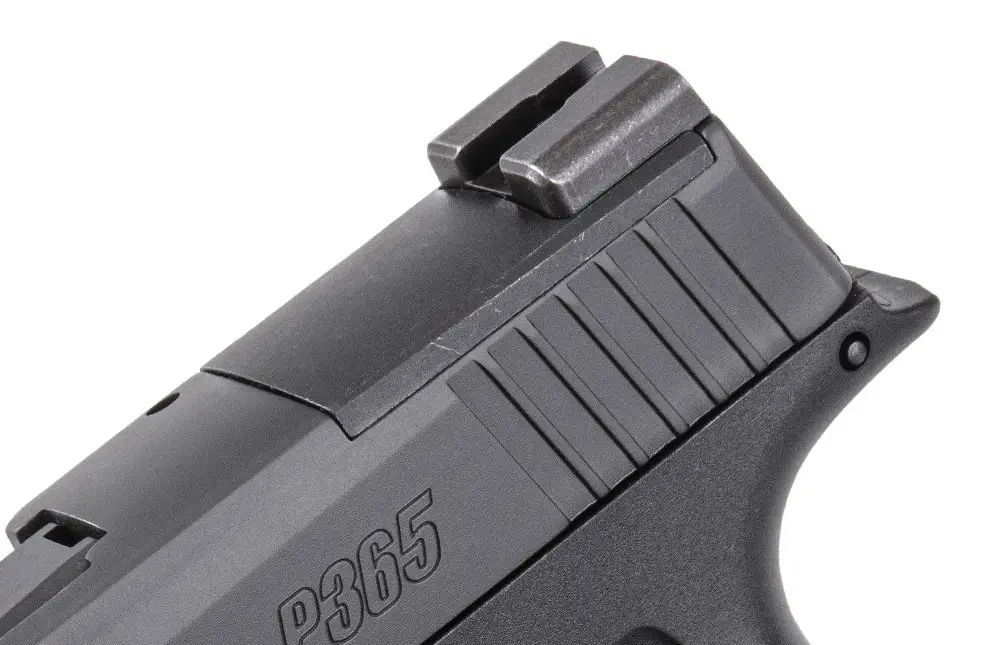
Issue 3: Failure To Extract
A failure to extract occurs when a round is fired, but, for one reason or another, the spent casing is not extracted, meaning that another round cannot be loaded and the pistol, thus ceases to function.
Solution:
Failures to extract can come from a variety of sources. One common one with cheap ammunition is a cracked casing, in which the casing expands too much and is stuck too tightly for the extractor to pull it out of the case. Additionally, extractors or firing ramps that are not geometrically sound can cause this issue. Lower-powered ammunition might also cause the issue if there is not enough energy to cycle the action.
In the case of the P365 XL, it could be the case that some extractors are weak. If this occurs to your firearm, we first recommend trying different ammunition. If different ammunition does not solve the issue, then we recommend replacing the extractor, which you can do yourself with just a few minutes of time. Should this not fix it, then the next remedy would be to contact Sig, and likely send the gun in for them to diagnose the problem.
Issue 4: Failure to Go Into Battery
A failure to go into battery is when a round, for one reason or another, does not seat properly into the chamber, usually preventing the gun from firing. In fact, you want the gun prevented from firing when it is not completely into battery, as an out-of-battery detonation is extremely dangerous to the shooter.
Solution:
These malfunctions can come from several sources. Firstly, it can come from magazines that have a weak spring that does not adequately push rounds up and into place. It can also come from the user not racking the slide all the way to the rear when chambering a round. Finally, damaged or incorrectly manufactured feed ramps can cause this issue.
With compact weapons like the P365XL, the most common cause of this failure are user induced: when racking the slide on an empty chamber, make sure to pull it back all the way and then let it go home: do not leave your hand on the slide as it moves forward. Also, give the magazine a good smack on the bottom once it is fully inserted. If neither of these solutions remedies the issue, consider new magazines.
Issue 5: 12 Round Magazines are Hard To Load
Some users find that the expanded 12-round magazines for their Sig P365 XL are hard to load completely. This is likely because the recoil springs in the magazine are stiff, especially when they’re new.
Solution:
The solution to this one is simple: there are readily availably plastic magazine loading aids that are a few dollars and we recommend them to anyone who shoots a handgun with any frequency. Loading magazines by hand can be deeply unpleasant, and we like saving the muscles in our hands and fingers for the range rather than beating them into the feed lips of a magazine.
Sig P365 Problems
The Sig Sauer P365 hit the scene in 2018 and has rapidly gained incredible popularity for its unprecedented capacity-to-size ratio. It’s seen as a micro-compact handgun that has completely redefined the concealed carry and everyday carry (EDC) categories, presenting shooters with the perfect balance of capacity, stopping power, and concealability.
One of the biggest attractants and most distinguishing features of the Sig P365 is its capacity. Despite the thin profile and diminutive size, the Sig P365 boasts a standard capacity of 10+1, while extended magazines make allowances for 12 and even 15 rounds, which represents a significant increase over other 9mm pistols in the same category.
The Sig P365 shows off a robust stainless slide and barrel, both with a Nitron finish for increased durability and corrosion resistance. The grip module is made from a high-tech polymer and is designed to be ergonomic for better grip and control during firing. Additionally, the Sig P365 also integrates the SIGLITE Night Sights, which are known to provide excellent sight picture in very low light conditions.
Issue 1: Slide Lock Issue
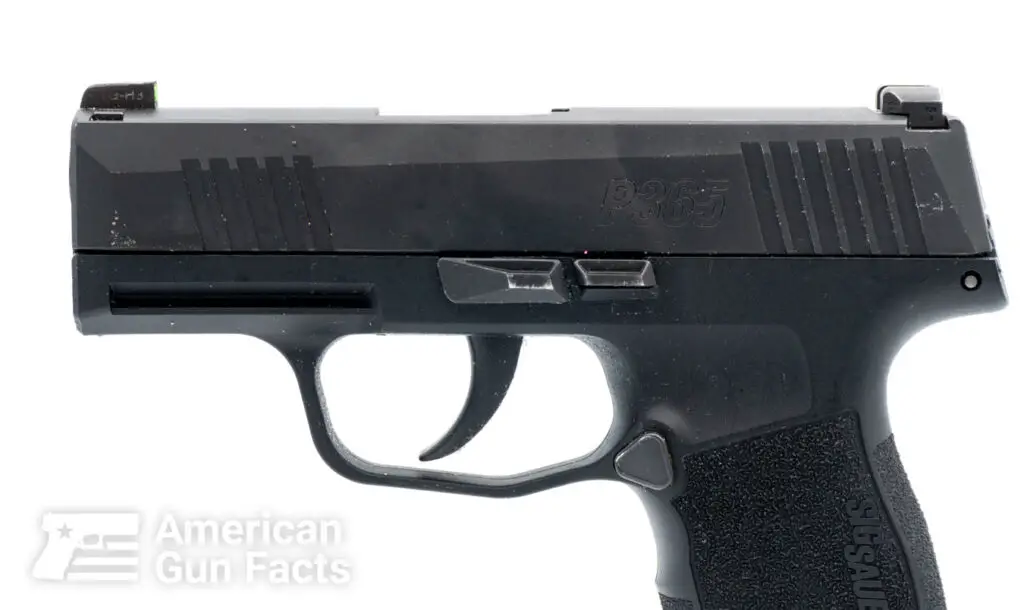
A common issue that is reported by owners of the Sig P365 is that the slide fails to lock back following the final round. There are several potential causes for this issue, including user error. However, it’s often attributed to the internal mechanisms of the firearm. Specifically, problems can arise from weak magazine springs not pushing the follower up to engage the slide lock, or from an issue with the slide lock lever spring itself. Even though these issues impact the overall operation of the Sig P365, they are not considered safety concerns.
How To Fix It
If your slide isn’t locking back after the last round is fired, the first thing you should look at is your grip. If your thumb is riding the slide lock lever while firing, it can easily prevent the slide from locking back. If it turns out your grip isn’t the issue, check the tension on the magazine spring to ensure the follower is being engaged. In the rare case that neither of those options fixes it, you’ll probably need to visit a gunsmith or contact Sig customer service.
Issue 2: Firing Pin Issue
In some earlier versions of the Sig P365, there were multiple reports of broken or cracked firing pins, leading to completely understandable concerns from current owners. The firing pin, or striker, is a critical component of any firearm, as it is what strikes the primer and ignites the powder, firing the bullet. This means a broken or cracked firing pin can render the firearm completely inoperable, which can be a serious or even deadly issue, when in a defensive situation.
How To Fix It
For a P365 that has a cracked or broken firing pin, contact Sig immediately. Sig Sauer has acknowledged the issue from early production runs, and committed to replacing the part for free. The pin has also since been redesigned, eliminating the potential for a similar problem at any point in the future.
Issue 3: Striker Drag

Striker drag is the term for a phenomenon that’s commonly seen in short-barreled, striker-fired pistols, and the Sig P365 fits cleanly into this category. It happens when the slide recoils before the cartridge has been fully ejected, causing the primer end of the casing the drag against the striker, creating the effect the action is named after. Over time, this leads to increased wear on the striker, and in some cases, it can cause physical damage and breakage of the striker. This issue isn’t unique to the Sig P365, and it won’t usually impact reliability, but it’s worth noting and being aware of as a Sig owner.
How To Fix It
Even though striker drag is a known problem in smaller, striker-fired pistols, it usually isn’t cause for alarm. Be sure to regularly inspect your spent casings for signs of excessive primer deformation, as this can give you an indication of the level of severity of your striker drag issue. If you’re noticing the issue worsening, you may want to contact Sig Sauer or a local gunsmith for advice on how to proceed. While common, striker drag should be monitored closely to prevent long-term damage to the firearm.
Issue 4: Trigger Reset Failure
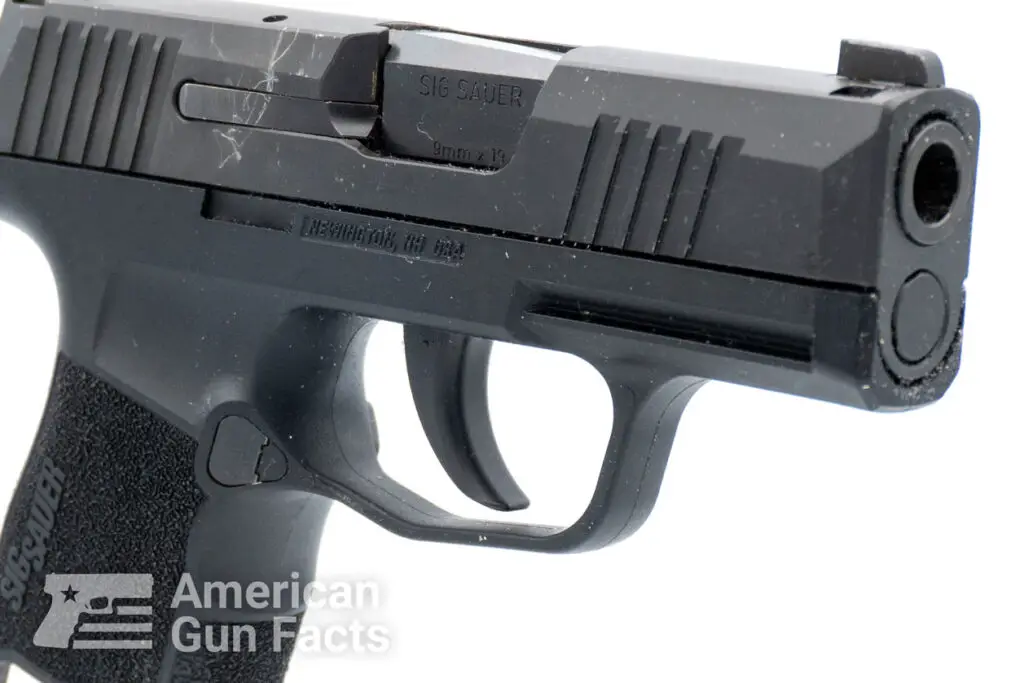
Another problem that has been associated with the Sig P365 is a trigger reset failure. In normal circumstances, when a round is fired and the slide cycles, the trigger should reset to the forward position, ready to fire the next round. Some shooters, however, have experienced situations where the trigger fails to reset, which means that a subsequent trigger pull does not activate the striker and fire the round. This issue has the potential to be serious in a self-defense situation, so it’s essential to identify this problem during routine dry-firing training sessions or trips to the range so that corrective action can be taken.
How To Fix It
The first solution for trigger reset issues is a thorough cleaning of the firearm. Dirt, grit, and assorted debris can sometimes interfere with the trigger motion. If a deep cleaning doesn’t solve the issue, you may need to consider replacing the trigger or spring. Dry-fire practice can help you identify potential problems early on.
Issue 5: Recoil Spring Assembly (RSA) Problem
The recoil spring assembly, or RSA, is another component of the Sig P365 that is reported to cause problems in certain cases. A properly-functioning RSA is critical for the reliable operation of any semi-auto firearm since it helps absorb recoil from a fired shot and return the slide to the battery following each cycle. Problems with the RSA have the potential to lead to several issues, such as failures to feed, failures to eject, and failures to go into battery. If your P365 isn’t cycling properly, the RSA should be one of the first components you should look into.
How To Fix It
If you’re seeing symptoms that may indicate an RSA issue, the first step, as usual, is to clean and inspect the entire RSA. Be sure it’s free of dirt and debris, and replace worn components as needed. If the problem persists, chat with a local gunsmith about more advanced inspection and troubleshooting.
Maintenance Tips for Sig P365
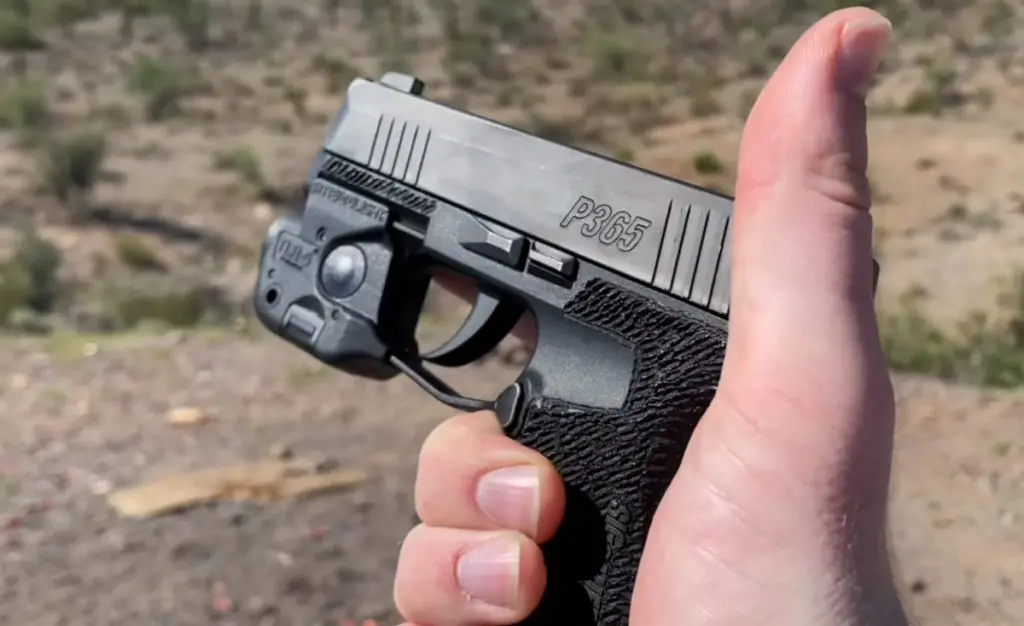
Preventative maintenance is one of the best and most reliable ways to avoid potential problems with any firearm, including the Sig P365. Regular cleaning and full inspection of your firearm are crucial. Pay special attention to the components and processes we’ve discussed here, like the firing pin, trigger assembly, and recoil spring assembly. Be sure you lubricate all moving parts sparingly, but adequately, since too little and too much oil can both cause issues. Replace worn parts like recoil spring assembly at regular intervals as recommended by Sig Sauer.
Remember to never ignore minor issues, since they can not only develop into major problems if left unaddressed, but they can also pose a risk to your safety while operating your firearm. If you are ever in doubt, always reach out to the manufacturer or a certified gunsmith for advice. Regular maintenance will ensure that your Sig P365 continues to serve you reliably for many years to come.
Conclusion
Despite these problems, do we still recommend the P365? In a word: yes. Many of the issues we described here are much more common in older guns as opposed to the new ones. Additionally, Sig is continually developing the platform and making improvements over time. We expect that as these iterations and eventual generations are likely to become more reliable over time. Of course, these issues are worth thinking about. Thus, we also recommend that, as soon as you get your P365, shoot several hundred rounds to make sure that it is reliable.
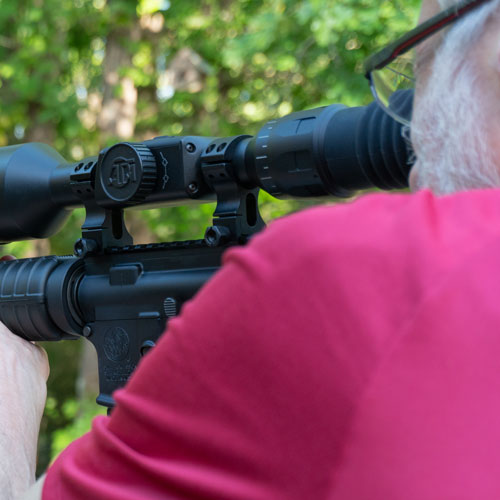
George has been an avid shooter for twenty years. He began shooting when he was gifted a Browning SA-22 for target practice. Now, as an academic, he combines his love of firearms and knowledge of history to write for firearms blogs and is still a frequent sight at the local range.
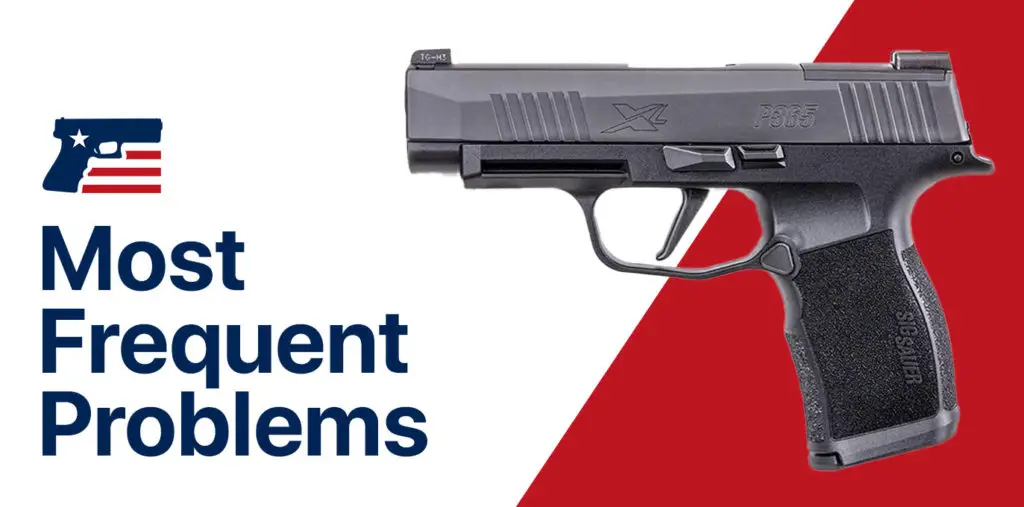

magazines are $50 each or $60 each depending on the round capacity you would think that Sig would at least make them out of stainless steel as there have been many complaints about the magazines rusting
My gen 1 p365 has had to go back to Sig SIX different times for problems since 2018. Obviously I now only carry Glock.